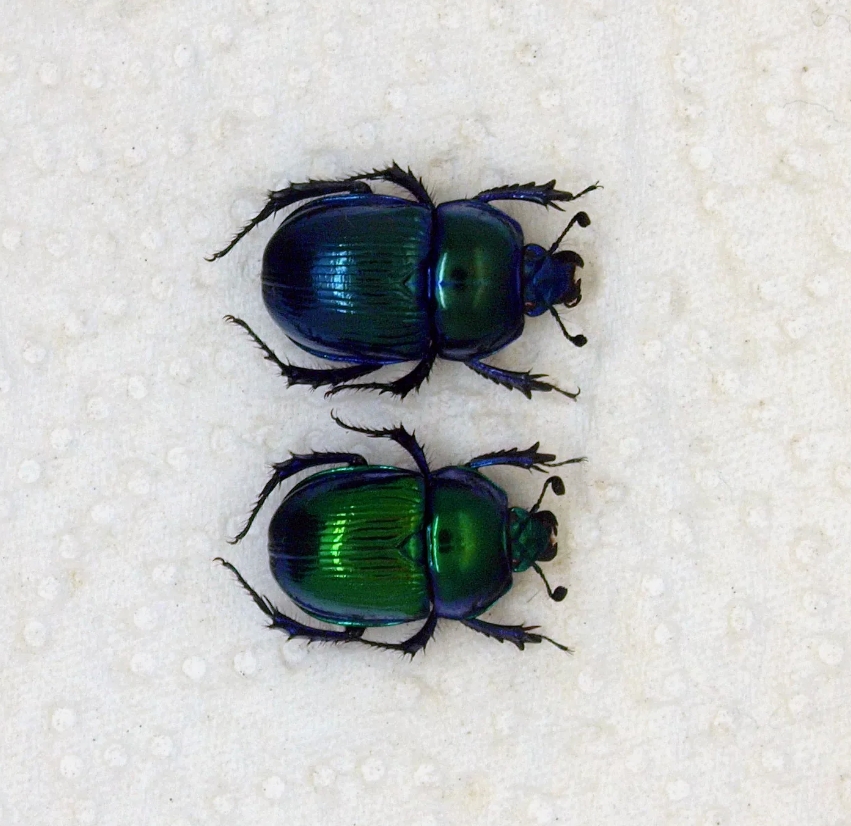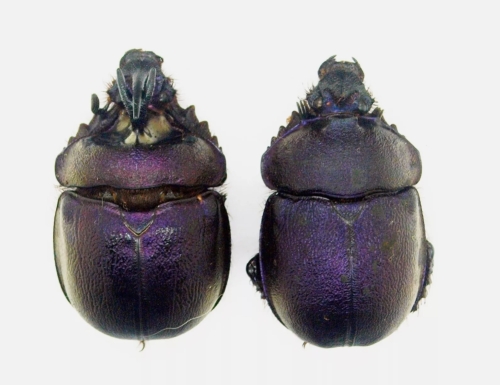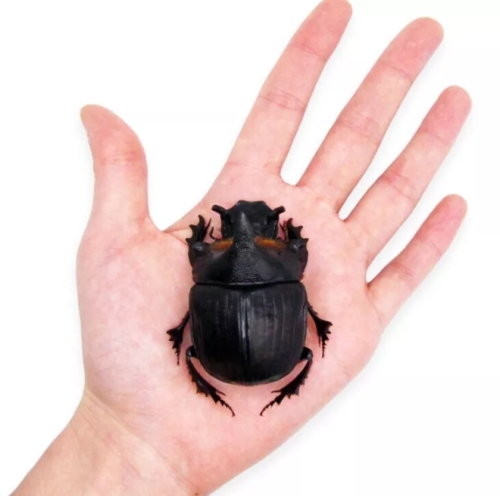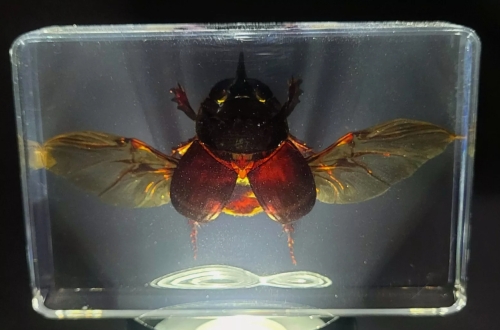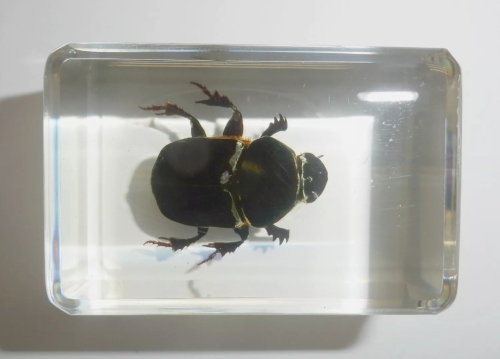Dung beetles are small creatures that play an important role in nature. They have attracted attention for their unique ecological habits and morphological characteristics. Dung beetles have symmetrical bodies, often appearing black or brown, with smooth surfaces and long, flexible antennae that help them sense their surroundings in complex environments. The main task of dung beetles is to clean the environment of decaying bodies and dung, converting organic matter into nutrients that can be used by plants, a process that is crucial for maintaining ecological balance.
Dung beetle preparation is meticulous. After the beetle is captured, its body needs to be fixed first for subsequent observation and research. Specimens are usually prepared using a preservation solution or drying method so that they retain their original form and color. The finished specimen not only serves as a vehicle to show the beetle's beautiful form, but also provides a reference for further understanding of its ecological habits. The color and surface texture of dung beetles are well preserved in the specimen, allowing the viewer to observe their detailed structure up close.
The life of dung beetles is equally fascinating. They tend to be nocturnal and focus on finding food and breeding. Some dung beetles even find food, roll it into a ball and take it back to the nest for storage. This behavior shows not only the dung beetle's intelligence, but also, to some extent, its ability to adapt to its environment. The role that dung beetles play in the ecosystem makes them a beneficial creature, as they help break down waste and excrement and drive the cycle of organic material.
Specimens are not only a collection object for nature lovers, but also an important material for education and environmental advocacy. Through dung beetle specimens, viewers can gain a better understanding of this unique creature and its place in the ecosystem.

